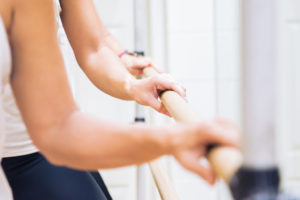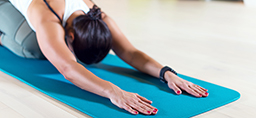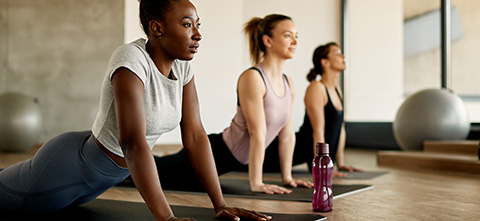
If you’re one of the millions of people who think ballet might be more inspiring than tire-flipping, it’s time for you to tiptoe up to the barre.
Barre classes, including big-name brands like The Bar Method and Pure Barre, seem to be everywhere these days—and for good reason.
Instructors of these classes start with movements from classical dance.
But instead of the intense—and monotonous—repetitions pursued by ballet dancers, they bring in a much wider world of fitness moves, including exercises from disciplines like yoga and Pilates.
Some also use light weights for more strengthening, while others offer more intense cardio versions.
It adds up to a powerful and effective low-impact fitness routine that builds strength and flexibility, all set to upbeat music.
“It’s a great workout,” said Phillip Adler, PhD, a certified and licensed athletic trainer and manager of the Spectrum Health athletic training team. “It offers many ways to stretch and strengthen. And much of the emphasis is on building up the core—and that’s very important.”
Because most classes combine mat work with the barre, the exercises are more accessible.
“Not everyone has the balance for certain yoga moves,” he said. “But the barre changes that.”
His one caveat? Check the credentials of the instructor before trying a class. Barre’s effectiveness relies on a fairly precise technique.
And because interest has skyrocketed, the best teachers are in demand.
For your first class, dress in comfortable yoga clothes. Be patient with yourself. Initially, instructors may seem a bit persnickety.
First-timers are often surprised at the smallness of barre exercises, with many requiring subtle movements of an inch or less.
But technique is critical, both for safety and effectiveness.
The right tuck of the pelvis can change an exercise from “Is this doing anything?” to “Holy cow, my abs have never worked this hard.”
Adler said you’ll know when you’ve found a good barre class. Some signs:
- You feel at home. Some studios have gotten the reputation of catering to the already-sleek and strong and make newcomers feel left out. “Like any class,” he said, “it should be welcoming.”
- It fits your fitness level. Even if you’ve been completely sedentary, classes should make it possible for you to work at your own level. You likely won’t be able to move as deeply into poses or hold them as long as other class members. The instructor should encourage you to modify as needed.
- It makes you uncomfortable. Classes are hard. Expect to hear lots of emphasis on “the shake zone,” when muscles begin to quiver. But it shouldn’t hurt. “A little discomfort is OK and, the next day, you’ll feel some soreness when walking,” he said. “But you shouldn’t be limping.” Be especially attentive to soreness that’s markedly different from one side of the body to the other.
Classes cost about the same as yoga and Pilates classes.
As you get better and more confident about technique, you can experiment with free barre-inspired home workouts you’ll find online. Many of those use equipment no more complicated than a chair, while others require no equipment at all.
Try not to be discouraged if the studio seems full of lithe, willowy and graceful classmates.
It takes several weeks of regular classes to get the hang of some of the moves. And if you look closely, everyone—instructor included—is likely shaking during some of the exercises.
Finally, Adler says, be realistic—especially about classes promising a long, lean dancer’s body overnight.
“Barre is just one component of fitness,” he said. “And it has to be part of a bigger lifestyle plan. That means we need to pay attention to diet, sleep and hydration.”
 /a>
/a>
 /a>
/a>
 /a>
/a>